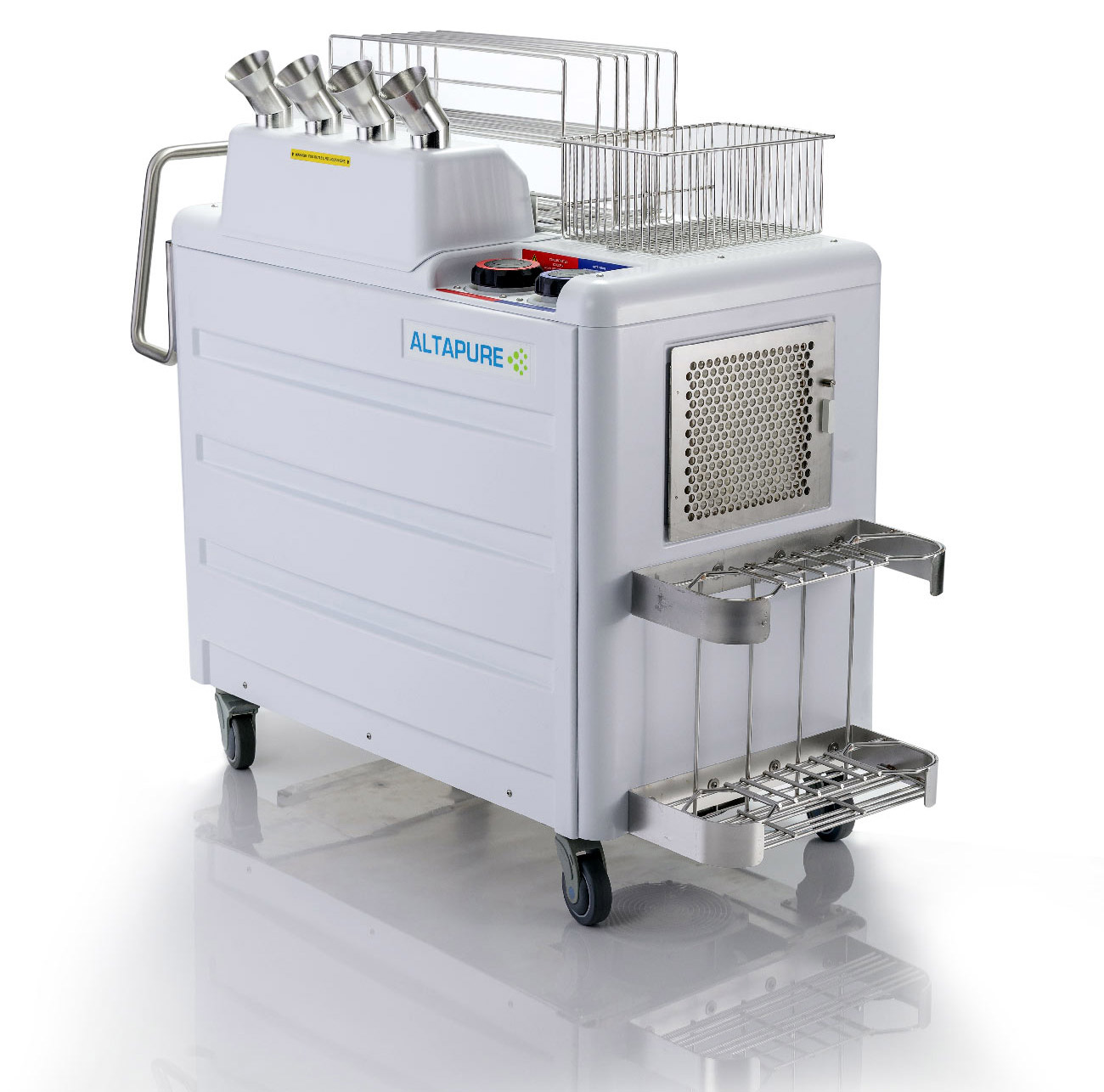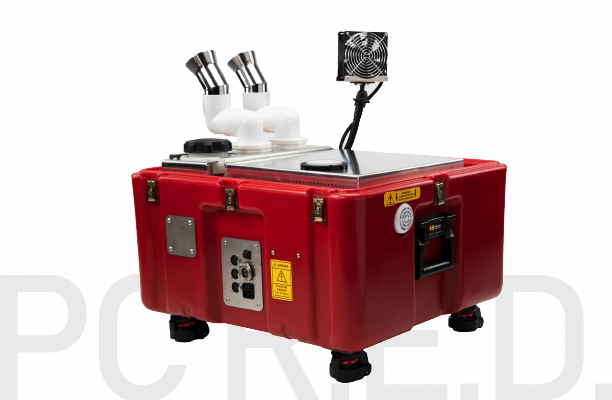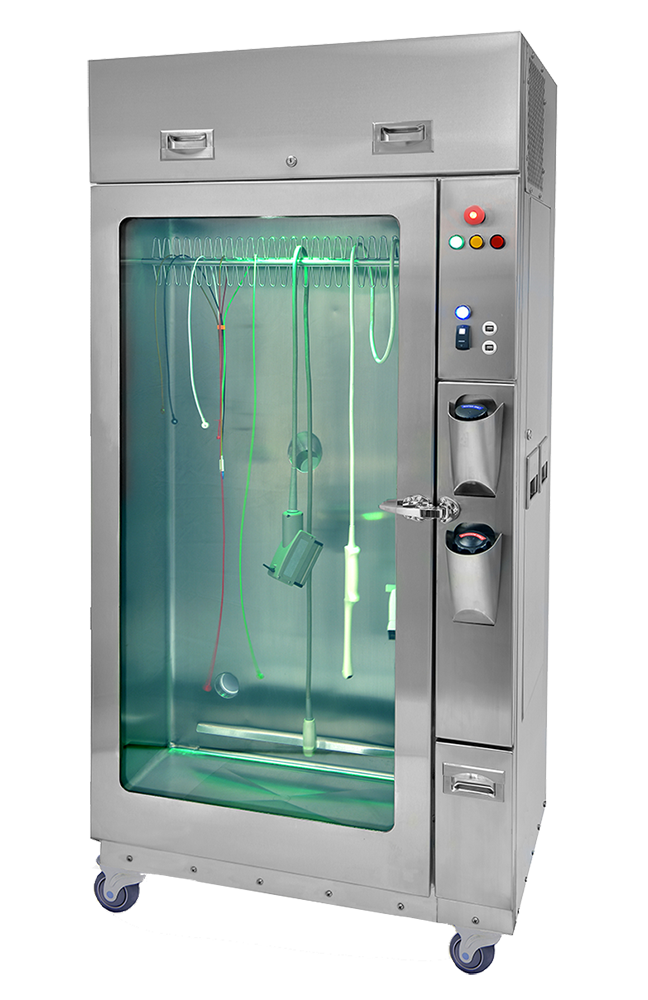The Clostridium Difficile (C-diff) Crisis
Let Our Experience Eradicating C. diff In the Hospital Setting Work For You:
Approximately 1.7 million hospital acquired infections (HAIs) occur in U.S. hospitals each year, resulting in more than 99,000 deaths and an estimated $20 billion in healthcare costs. (5)
More specifically, Clostridium difficile (C-diff) is one of the most common hospital acquired infections, and the Centers For Disease Control (CDC) reports that nearly half a million (500,000) Americans suffer from Clostridium difficile (C. difficile) infections in a single year. (1) In 2017 44,500 patients died of C. difficile-acquired infections. These infections have resulted in healthcare expenditures between $9,000–15,000 per patient, or an estimated $1.5–3.2 billion annually. (2)
Patients infected with C. difficile (C-diff) can discharge millions of viable spores with each bowel movement. Because of the nature of the C-diff spore, it sticks to hands and clothing of patients and hospital staff as well as their shoes. (3) These spores are then transferred from patient to patient and from place to place. In another recent peer reviewed paper, Dr. Koganti and Dr. Donskey et al., demonstrated that a non-pathogenic virus inoculated onto floors in hospital rooms disseminated rapidly to the hands of patients and to high-touch surfaces inside, and even outside, of the patient rooms. (3)
The Altapure AP-4 technology when used with an EPA-approved PAA disinfectant, delivers a consistent 6 Log kill of C. difficile spores in the entire treated space. (4) The published data clearly show that the Altapure technology will meet and exceed the EPA definition of “disinfection” and will do so for a patient room in less than 50 minutes using Altapure’s AP-4 device.
Why Peracetic Acid (PAA) Achieves 100% Kill Of C. difficile:
Unlike other products, Altapure generates a gas-like aerosol from an EPA registered “Cold Sterilant” that is certified as a “Sporicide” the hardest EPA claim to attain and the highest performance level for killing pathogens – including viruses.
Altapure's AP-4 ™ High-level Disinfection System (HLDS ™)
The AP-4 HLDS ™ is designed for large spaces such as: Operating Rooms, Patient Care Rooms, ICU’s, NICU’s, Burn Units, Employee Break Rooms, Changing Rooms, Laundry Processing Areas.
- 6 Log + kill of bacteria, spores, fungus, and viruses.
- No remaining virus particles to spread.
- Easy to transport.
- Integrated air filtration system.
- Total gas-like 3-D space coverage.
- Advantage of liquid to surface contact vs. vapor & gas systems.
- Residue-free process.


Altapure's PC-R.E.D. ™ High-level Disinfection System
The PC-R.E.D. ™ offers the same performance as the AP-4 ™, but is designed for smaller spaces such as: Ambulances, First Responder Vehicles, Home Use, School Buses, Small Clinic Spaces.
- Total space high level disinfection
- Rapid kill + elimination of spores,
bacteria, and viruses - Sub-micron aerosol: gas like performance
with 3D coverage - Food safe, non-toxic + biodegradable,
no residue chemistry - Easy to maneuver + portable
- Rugged + durable construction
- Lightweight
- Safe for all electronics + equipment
- Compatible with all Altapure Accessories
- HVAC control system
- Scrubber Buddy
Multipurpose High-Level Disinfection Cabinet (MPDC-1 ™)
The multipurpose disinfection cabinet (MPDC-1 ™) is entering the FDA 510-K approval process. This product was successfully challenged by an independent laboratory. As a result, there was a 6 Log + kill for VRE, CRE, MRSA, C. difficile, and C. auris, obtained in a twenty-three (23) minute process cycle, without any detected residue post cycle.
- No remaining virus particles to later spread.
- Compact Cabinet System.
- Easy to transport.
- Total gas-like 3-D space coverage.
- Advantage of liquid to surface contact vs. vapor & gas systems.
- Residue-free process.
- 6 Log + kill and no growth for: bacteria, spores, fungus, and viruses.
A remarkable Log 8.4 log kill of the C. auris fungal pathogen was also obtained in only a fifteen (15) process cycle, with a cycle cost of only twenty cents ($ 0.20 USD). The MPDC-1 ™ cabinet can high-level disinfect one or more, ultrasonic imaging devices and probes, and/or other non-lumen devices, in the same treatment cycle.
This high-level disinfection cabinet also recently proved in a peer reviewed independent study, that it meets the criteria for disinfection and decontamination of N95 masks, achieving >6-log 10 reductions on N-95 respirator filter material with a 31-minute process cycle, for:
- Bacteriophage MS2 (coronavirus surrogate)
- Methicillin-resistant Staphylococcus aureus (MRSA)
- difficile spores
The MPDC-1 ™ showed it can meet the EPA definition for disinfection of surfaces contaminated with this virus as well as MRSA and C. difficile spores.
Coming Soon!

Altapure’s 6 Log + Kill, High-Level Disinfection Systems:
Altapure’s AP-4 ™, PC-Red ™, and MPDC-1 ™ products, are all engineered to ELIMINATE pathogenic super bugs present on all exposed surfaces in the health care environment (ie: C. auris fungus and its spores, C. difficile and its spores, VRE, CRE, Influenza, SARS-CoV-2 (COVID-19), and MRSA.
References:
1) Centers For Disease Control (CDC), Press Release, February 25, 2015. Website link: https://www.cdc.gov/media/releases/2015/p0225-clostridium-difficile.html.
2) Irene Louh, MD, PhD, and Henry Ting, MD, et al.: “Clostridium Difficile Infection in Acute Care Hospitals: Systematic Review and Best Practices for Prevention”, infection Control & Hospital Epidemiology, April 2017, Vol. 38, No. 4.
3) Sreelatha Koganti, MD, and Curtis J. Donskey, MD, et al.: "Evaluation of Hospital Floors as a Potential Source of Pathogen Dissemination Using a Nonpathogenic Virus as a Surrogate Marker", Infection Control & Hospital Epidemiology, November 2016, Vol. 37, No. 11.
4) Curtis J. Donskey, MD, and Thriveen S.C. Mana MS, MNO, et al.: “Evaluation Of An Automated Room Decontamination Device Using Aerosolized Peracetic Acid”, American Journal of Infection Control, March 2017, Vol 45, Issue 3.
5) Centers For Disease Control (CDC), Article: “Preventing Healthcare-Associated Infections” Website link: https://www.cdc.gov/washington/~cdcatwork/pdf/infections.pdf.


